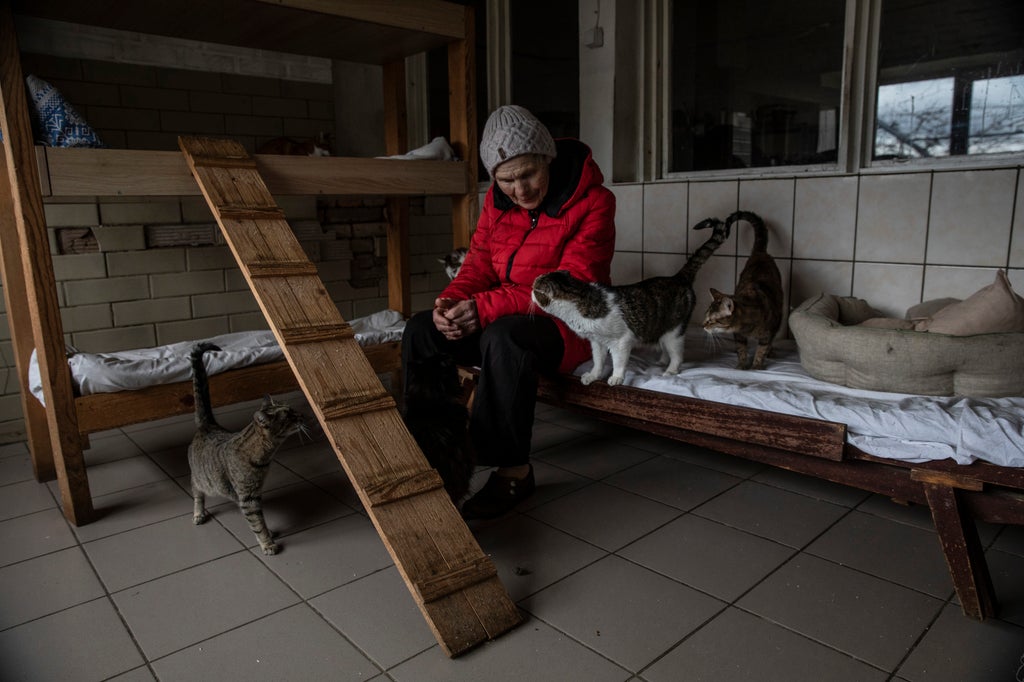
As Russian tanks neared Kyiv this year, the capital’s suburbs were emptying fast. Terrified residents poured out; roads were gridlocked.
Asya Serpinska walked the other way.
Serpinska had spent two decades keeping her animal shelter going in Hostomel, a town northwest of Kyiv. With the threat of Russian occupation now looming, she thought, there was no place in Ukraine that needed her more.
Shelling boomed out as she arrived at the shelter. Through the gate she recognised the howling and whimpering of various animals.
“I knew it was my responsibility to look after them,” Serpinska recalls.
With three colleagues, she kept most of the 700 dogs and 100 cats alive – and even rescued a lion – as Russian and Ukrainian forces exchanged shelling overhead and as Russian forces repeatedly entered the property and threatened their lives.
Slight of build with soft grey hair, Serpinska says she was born stubborn. She says her marriage is a testament to that. She met Valentyn at 18, and although her parents didn’t approve, she went ahead with the marriage anyway.
With Russian forces on all sides of Hostomel, Valentyn, who is fighting stage 4 cancer, drove through the night and hostile checkpoints to bring her a generator that saved the shelter.
The first thought that crossed my mind was that I had to run to the shelter, I was consciously going to war. My people were here, my dogs were here
Serpinska grew up with animals. She was a maths professor but volunteered with animal rescue groups in her spare time. After retiring from the university 22 years ago, she founded her shelter, and four-legged creatures began pouring in.
Her favourite was Gina, a glossy black dog with mismatched eyes.
Russia’s invasion of Ukraine upended lives across the country. As Russian forces moved toward Kyiv, officials predicted the city could be seized within weeks.
When Valentyn woke Serpinska at 7am that day, he told her it was beginning.
“The first thought that crossed my mind was that I had to run to the shelter,” she says. “I was consciously going to war. My people were here, my dogs were here.”
For some shelters, the invasion spelt tragedy. In the Kyiv suburb of Bordyanka, the owner of a government-run sanctuary left the animals in their cages and fled. Without food and water, 335 of the almost 500 dogs died.
When asked why no one evacuated the animals, Natalia Mazur, the shelter’s director, asked why people hadn’t been evacuated.
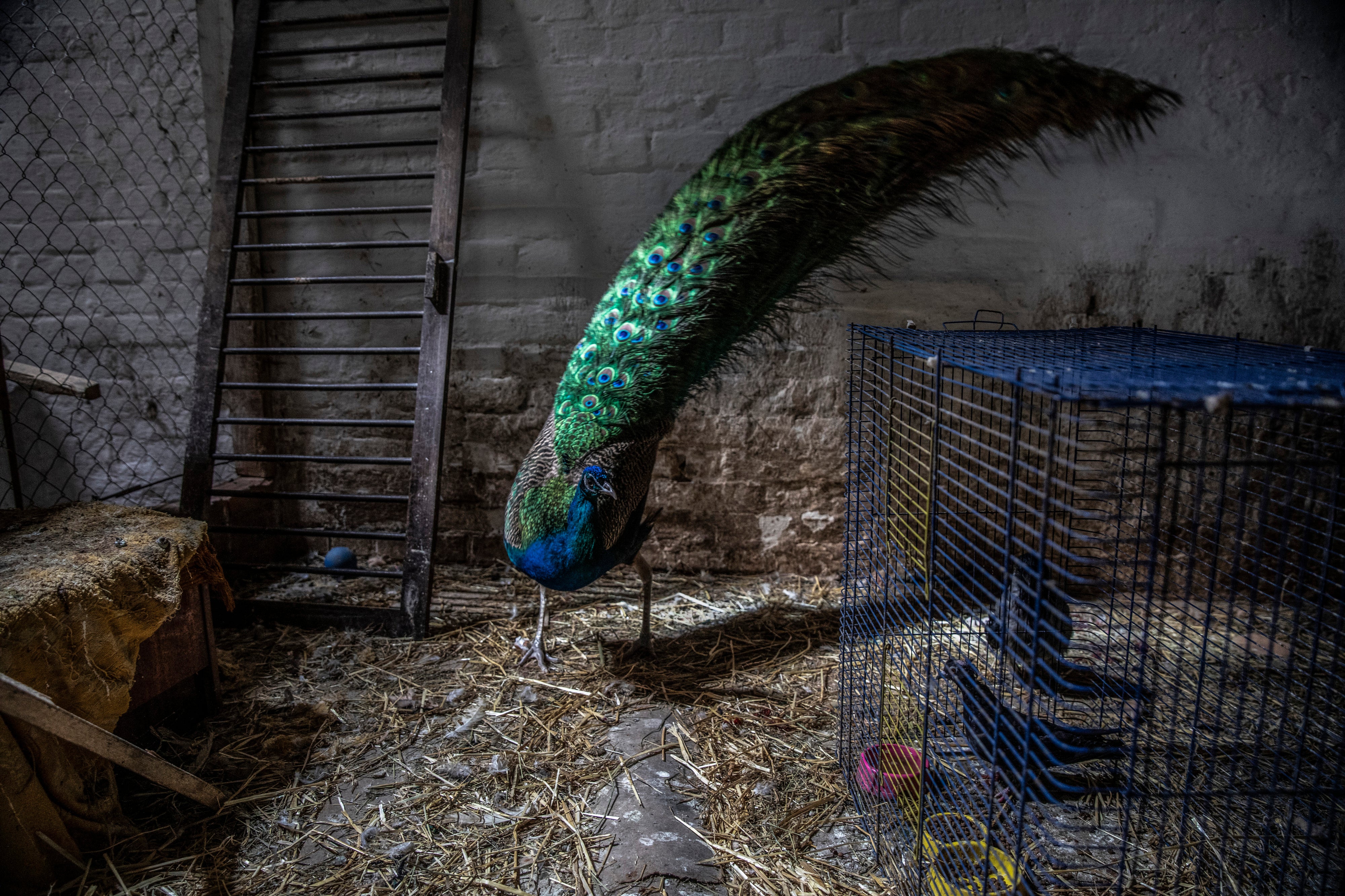
Serpinska was devastated when she saw photos of the animals’ emaciated bodies. When she arrived at her shelter in Hostomel on the day of the invasion, 24 February, the first thing she did was open all the cages so the animals could roam free.
“Why didn’t they open the cages there, too?” she says. “It would have been so easy.”
As shelling continued over Hostomel, the shelter’s staff kept order, no matter what was happening outside the gates. Feeding times remained 6am and 6pm. The rest of the day, they cleaned and watched the animals, and at night, at least 10 of the dogs huddled under Serpinska’s blankets. “They thought I could protect them,” she says.
Friends and family begged her to leave, but she refused. “My place is here,” she told them.
She affixed a golden icon to the shelter’s front door to scare away God-fearing soldiers. They entered anyway, and often terrorised the staff.
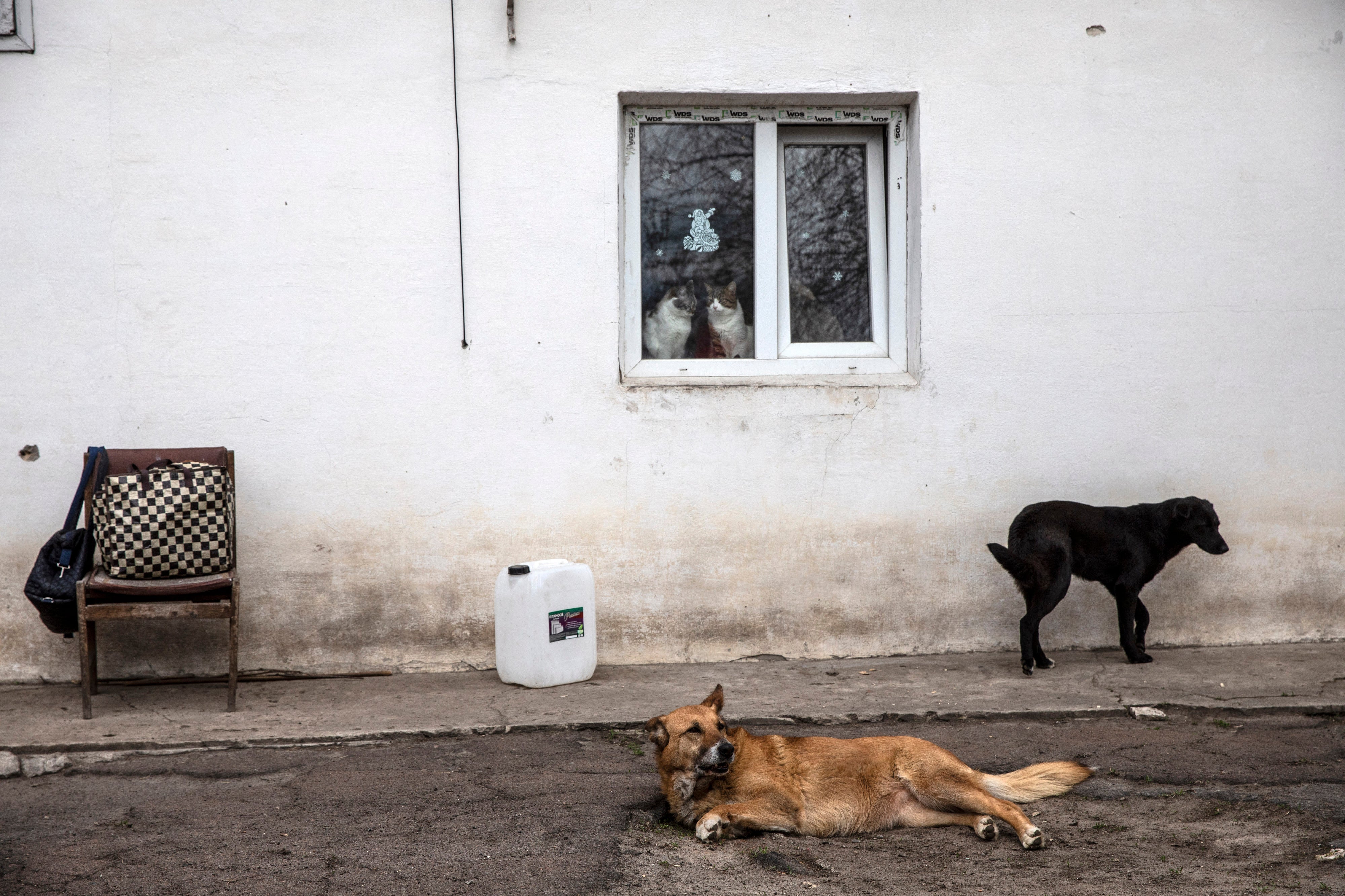
Once, as two soldiers – “dressed like Terminators”’ Serpinska remembers – marched toward the shelter’s front gate, some of the dogs surged ahead to protect her. A Russian soldier raised his gun and shot Gina through the fence.
She had been running the fastest.
“Why are you shooting? They’re good and kind,” Serpinska screamed at him as her dog lay dead.
“Well, why are they barking at me?” came the reply.
Amid the chaos of the fighting, the dogs grew so scared that some dug holes metres deep in the earth. Several were killed in the bombardment.
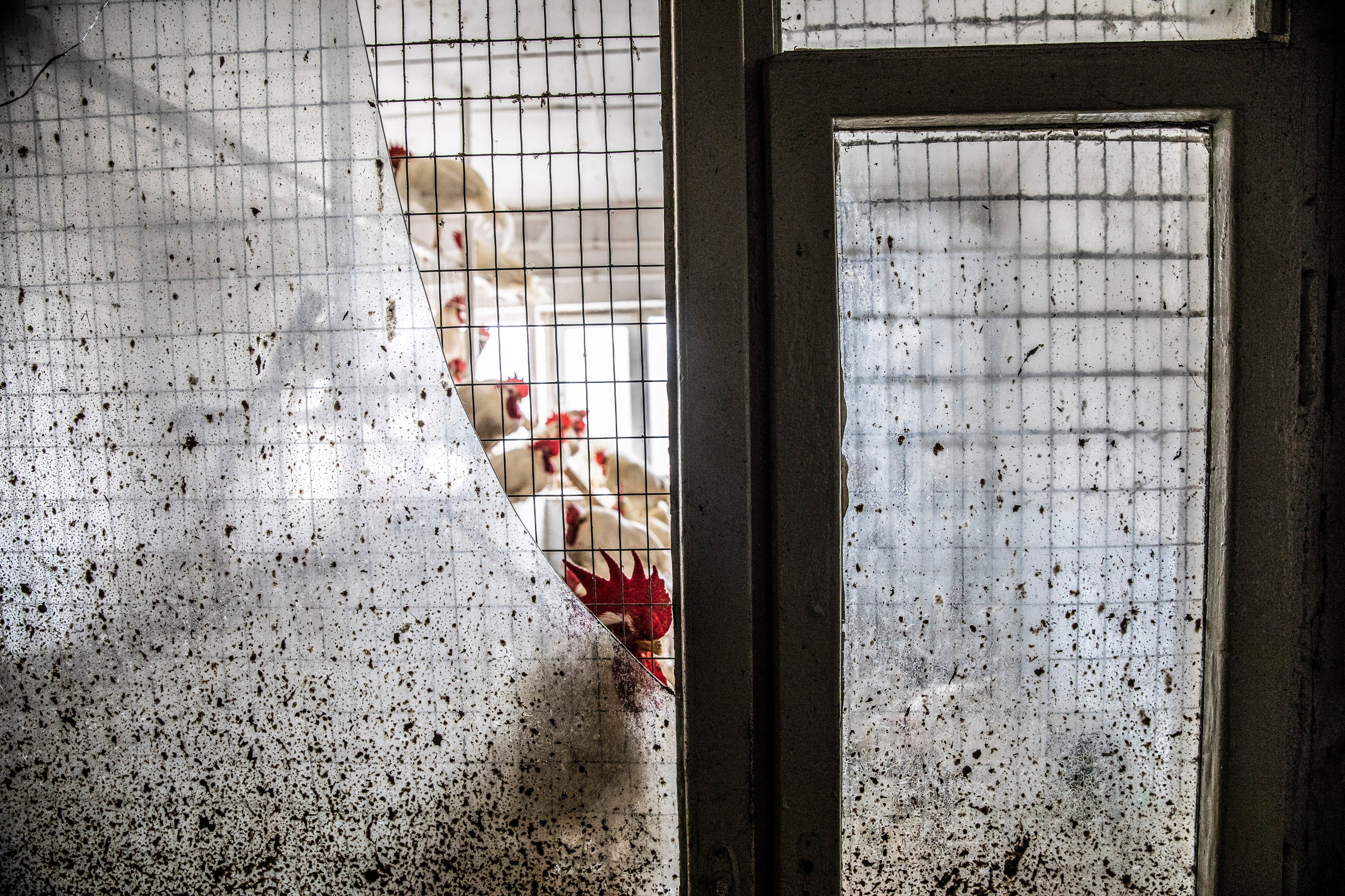
When a shell landed on a nearby private zoo that housed exotic animals, Serpinska watched in horror as flames engulfed the building. Its owners had abandoned it, so her team battled through the smoke, rescuing peacocks and turtles.
“Only the lion got left behind,” she remembers, with a frown. “For five weeks, we would go there under shelling and bullets to feed that lion, because it had been locked in a cage and we didn’t have the keys.”
One day, Russian soldiers placed a mine outside the cage, she says. Serpinska began negotiations.
“We said to them: ‘Here’s some water in the bucket, here’s some food. Please feed the lion.’ ”
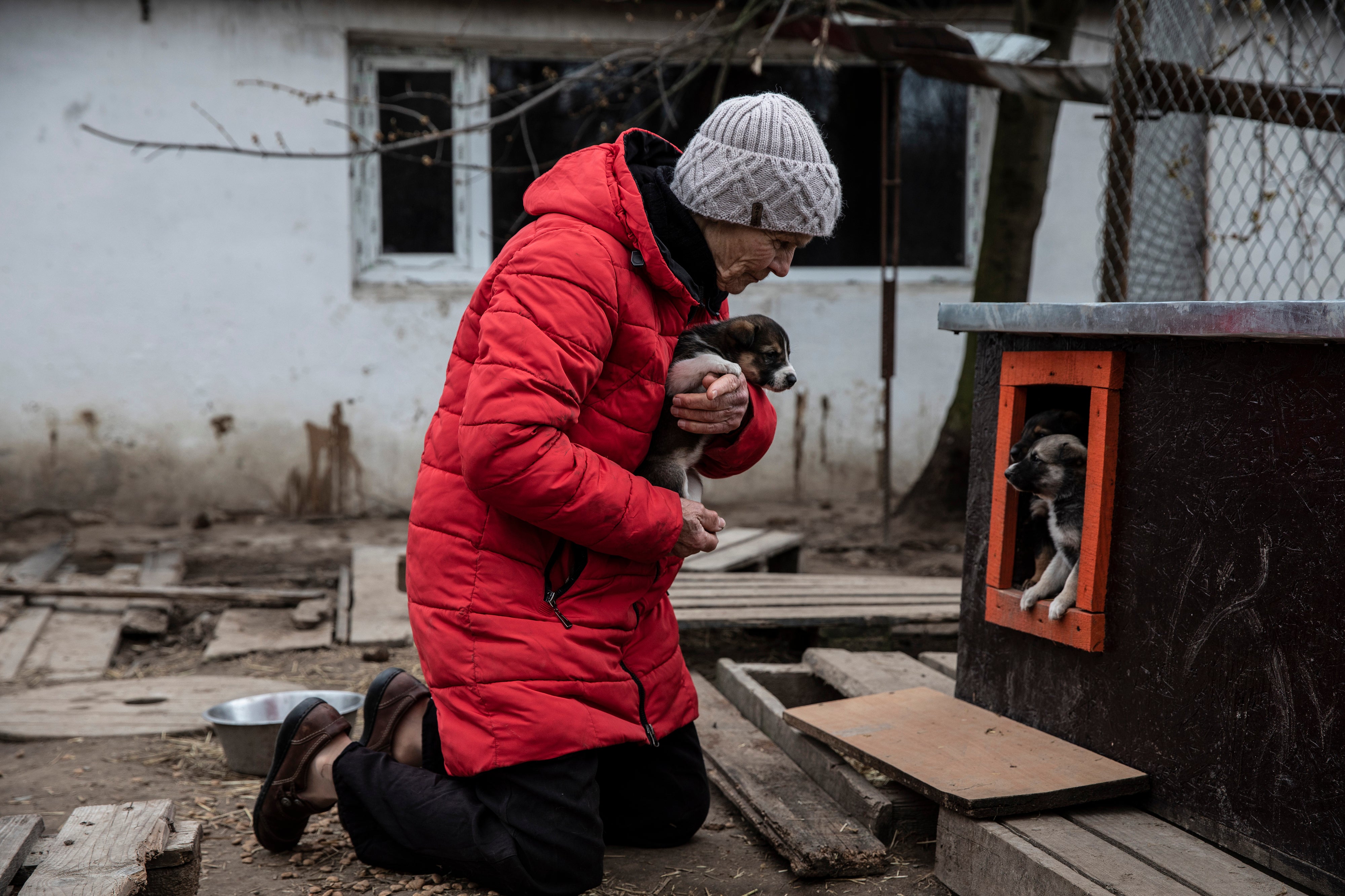
The men didn’t budge, so she handed over two packets of cigarettes.
“Step back 10 metres and put them on the ground, then leave,” a soldier told her.
He stooped down to grab the spoils, then detonated the mine. “It was quite an explosion,” Serpinska says. But the lion was safe – she fed him daily until Ukrainian forces reclaimed the town in early April.
Hostomel is quiet now. Homes are still deserted. Many are burned or in ruins. Driving through the town’s streets, Serpinska has been reduced to tears.
But she is rebuilding.
“My parents were terrorised by the Soviets, and so were their parents before them,” she says as she approaches the shelter. “Our generation must resist them.”
When she enters the shelter’s yard, the dogs swarm her and their tails wag as they bark in a chorus.
The shelter’s electricity has yet to be fixed, but the animals seem happy nonetheless. A rescued peacock ambles in a patch of sunlight from a hole in the roof. The cats are all in their bunk beds, each enclosure warmed by a little coal chimney.
“We have a saying, and it’s important,” Serpinska says, as she watches them. “For us, to save animals is to be human.”
Joyce Koh, Heidi Levine and Kostiantyn Khudov contributed to this report
© The Washington Post







